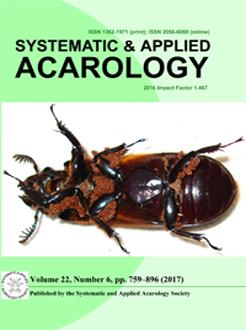Achipteria sgardelisi sp. nov. and its morphological ontogeny is described and illustrated. The adult of this species has a clavate bothridial seta, with a barbed head distally, which is not common in Achipteria Berlese, 1885; in most species the head is smooth. Notogastral setae c2 and la are long, while the other setae are short, and rounded porose areas are present, of which Aa is the largest. Genua I and II lack anteroventral apophysis, genu IV is approximately as long as tibia IV, and setae bv″ and v″ on femur I and l′ on femur III are short. All prodorsal setae of juveniles are minute. Most gastronotal setae of larva are short, thick and barbed, except for minute c-series and smooth h2, whereas most gastronotal setae of nymphs are minute, except for short, thick and barbed lp and h-series. Leg claws of all instars are smooth. The morphology of the adult and juveniles of A. sgardelisi is compared with congeners.
How to translate text using browser tools
19 May 2017
Achipteria sgardelisi sp. nov. (Acari, Oribatida, Achipteriidae) from Greece and its morphological ontogeny
Stanisław Seniczak,
Anna Seniczak
ACCESS THE FULL ARTICLE

Systematic and Applied Acarology
Vol. 22 • No. 6
June 2017
Vol. 22 • No. 6
June 2017
juveniles
leg setation
oribatid mites
stage structure




